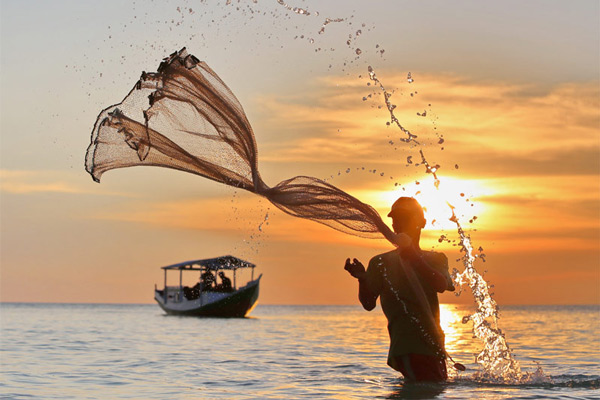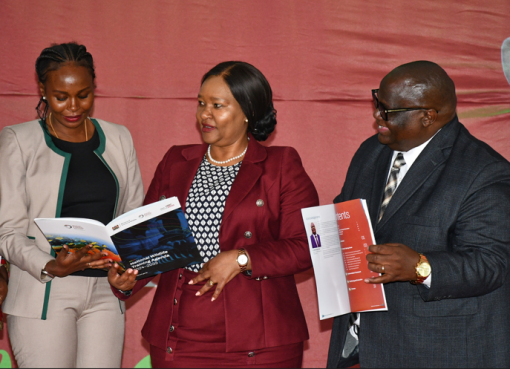Marine fishery is estimated to have a potential of between 150,000 to 300,000 Metric Tonnes per year, with an annual value of over Ksh 7.5 Billion.
However, Kenya faces a number of challenges in the fisheries subsector with Low investment in deep-sea fishing, Inadequate manpower and skills in the subsector, Inadequate Fisheries, Monitoring, Control and Surveillance.
Agriculture , Livestock , Fisheries and Cooperatives, Cabinet Secretary Peter Munya said that the absence of a substantive local investment in deep-sea fishing means that mainly Distance Water Fishing Nations (DWFNs) exploit the Exclusive Economic Zone (EEZ) fishery limit in accordance with the UN Convention on the Law of the Sea
In a speech read on his behalf by the state department for fisheries, aquaculture and blue economy Principal Secretary Prof. Micheni Ntiba, during validation meeting on draft marine and inland fisheries regulations in Nairobi, the CS said that Kenya has put in place an appropriate policy and legal framework that includes Revision of the National Oceans and Fisheries Policy.

“Kenya has further ratified the Port State Measures Agreement (PSMA) 2009 to prevent, deter and eliminate illegal, unreported and unregulated fishing in August 2017 according to adoption and ratification of International Agreements and Protocols”, he said .
He noted that the establishment of the Coast guards is government’s commitment to ensure that illegal activities in fishing and fisheries related crimes are rooted out. “We must join hands to ensure sustainability of the resources and livelihoods of the people of Kenya”
The Government, Munya said has further applied to extend the boundary to 350 nautical miles limit for exploitation of bottom ocean seabed resources as this will present Kenya with an enormous maritime area with a huge potential to contribute to the socio-economic development of its citizens
The government through the Ministry , the CS confirmed has rolled out several initiatives to ensure sustainable exploitation of the fisheries resources and they include development and refurbishment of five landing sites namely Gazi, Kibuyuni, Kichwa Cha Kati, Vanga and Ngomeni as well as gazettement of the Liwatoni Fishing Port, and construction of two fish markets in the Coastal region.
The government has gone ahead and also trained local fishermen on deep sea fishing technology, Value addition technology for Sea Weed farmers and is in the process of procuring fishing gears and boats for local fishermen who also have been capacitated to go beyond the barrier reef for fishing expeditions.
He noted that the National stakeholders’ Validation forum will improve and firm up on the proposals in the Draft Marine and Inland Fisheries Regulations.
Principal Secretary in the State Department of Fisheries, Prof. Micheni Ntiba said the sea is quite deep and wide and therefore there is need to develop the capability and investing in getting better vessels which he clarified are not so cheap.
“We also need to be able to police the waters to prevent foreigners from entering our territory and fishing even without giving us data”, he said noting that we have an unexploited stock of over 300,000 metric tonnes in our seas.
He confirmed that the country now is dealing with a situation where we need to retain our Nile perch fish by catching them more than 85 centimeters long and also not smaller than 50 centimeters
“We need to retain the big ones since they lay big eggs and their big larvaes survive better and that is where our bank is. If we are unable to control the retaining of big Nile perches and our fisheries collapses, it will take a long period for reestablishment “, Prof Ntiba said
The PS said that the country wants tio increase productivity of fish in order to make it cheaper and affordable by Kenyans . The strategy is selling our fish at premium prices and also buy cheaply in the markets.
Chair County Executive Committee Member (CECM) Caucus of Agriculture Mary Nzomo said the potential of the fisheries sub-sector in the economy in regards to employment creation food and nutrition security is enormous yet untapped.
“Despite accounting for only about 0.5 percent of the GDP, fisheries sector creates employment to more than 2 million Kenyans via fishing, boat building, equipment repair, fish processing and support activities”, she said .
In 2013, Nzomo explained that the marine fishing had an annual fish potential of Ksh 90 billion but only 2.3 billion was realized and therefore this shows the latent potential of the sub sector that is waiting to be tapped..
The subsector, she noted is key in achieving the development goals laid out in the agriculture sector transformation and growth strategy , big four agenda, vision 2030 and the SDGs..
“It’s therefore worrying to note that a lot of emphasis has been put towards developing other subsectors leaving behind fisheries which is as important in transforming this country”, she said .
The CEC said the formulation of the regulations is timely in enabling the national and county governments to realize the underlying potential of the sub sector thus enabling the country to capitalize on blue economy.
“Counties have a direct role in promoting fishing as one of the local economic activities. But government at national level need to help counties in sustenance of fisheries activities as they put the necessary laws and regulations in place”, she said.
Nzomo added that all counties in this country have potential , and with water resources protected and tapped fish farming promotion can be done across s every corner in this country.
By Wangari Ndirangu




